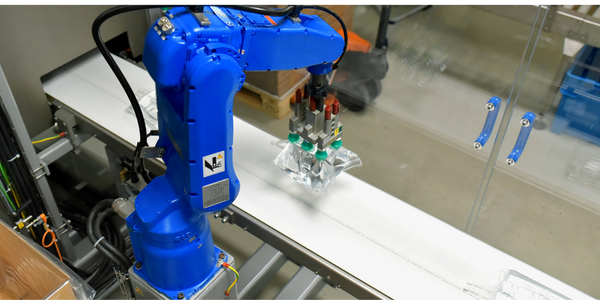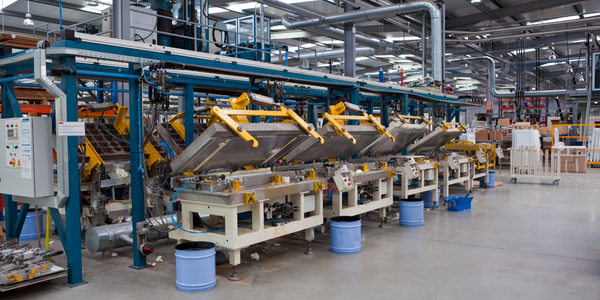Technology Category
- Analytics & Modeling - Computer Vision Software
- Application Infrastructure & Middleware - Data Exchange & Integration
Use Cases
- Clinical Image Analysis
- Time Sensitive Networking
Services
- System Integration
About The Customer
Answers.com is a knowledge-sharing website where experts share their knowledge to enrich others. The site is characterized by a significant volume of image uploads, which contribute to the site's appeal. As the company expanded, so did its business needs, requiring a robust, scalable system for their image capabilities. The engineering team was tasked with handling these image uploads in a fast and secure way, storing the images, applying various graphic modifications, and delivering them to end-users in an optimal and quick manner. The rapid growth of content and images added to the site necessitated a solid, scalable solution that was also cost-effective.
The Challenge
Answers.com, a popular website for sharing knowledge, faced a significant challenge in managing the vast volume of image uploads. The engineering team was tasked with storing these images, applying various graphic modifications, and delivering them to end-users in an optimal and quick manner. These tasks were complex and time-consuming. As the company expanded, the business needs grew, requiring a robust, scalable system for their image capabilities. The existing system needed re-engineering to support the scale, and the team was in search of a better solution to facilitate their work with images. They were looking for a partner to help expedite the process while meeting their evolving image requirements. The rapid growth of content and images added to the site necessitated a solid, scalable solution that was also cost-effective.
The Solution
Cloudinary was chosen as the solution to Answers.com's image management challenge. It met all of Answers.com's requirements, offering unparalleled scale and powerful support, particularly for the site's user-generated content. The integration with Cloudinary was fast and seamless. Answers.com leveraged Cloudinary's special S3 setup, which allowed them to use their AWS S3 bucket and have their files transformed on-the-fly. All images uploaded to Answers.com and displayed across various consumer devices were automatically normalized, resized to scale using face detection-based cropping, and optimized while supporting a large set of image formats including animated GIFs, vector graphics, and even PDFs. Cloudinary was also able to easily handle Answers.com's massive inbound traffic.
Operational Impact
Quantitative Benefit

Case Study missing?
Start adding your own!
Register with your work email and create a new case study profile for your business.
Related Case Studies.

Case Study
Centralizing Data for Improved Efficiency: A Case Study on Malvern Panalytical
Malvern Panalytical, a UK-based hi-tech electronics company, was grappling with the challenge of decentralized data storage. The company had a vast amount of unstructured data scattered across various platforms, from hard drives to emails and floppy disks. This made the data searching process extremely cumbersome and inefficient. The company's rapid growth, from 200 to over 1,000 employees in a decade, and expansion across three continents further exacerbated the need for a more structured and centralized data system. As a company involved in electronics manufacturing and software development, it was crucial for Malvern Panalytical to find a platform that could structure all their data, track all modifications of documents in real time, and provide clear visibility of the internal information flow across all its facilities.

Case Study
Novartis Leverages IoT for Enhanced Drug Discovery
Novartis, a global healthcare company, was faced with the challenge of managing and making sense of a vast amount of data. The company had decades of data on how various compounds affect protein targets, with about a billion data points in total. This historical data was critical but sparse compared to the granular data currently being collected. Novartis uses an automated process that captures high-content image data showing how a particular compound has affected an entire cell culture, generating terabytes of phenotypic data. The challenge was to combine this historical data with the burgeoning phenotypic data and place it within the larger context of ongoing medical research from around the world. The team also wanted to combine its data with medical information from NIH’s PubMed, which contains about 25 million abstracts from some 5,600 scientific journals.

Case Study
Managed Hosting Platform
Formula 1® is a sport where every millisecond matters. With changing preferences and the growth of the digital medium, many fans choose to experience the sport through the F1.com website. The website needs to deliver a superior experience to tens of millions of fans across the world consistently. Hence, it is imperative to have a robust platform that can deliver the required performance and scale with growing trac and dynamic fan expectations. Some of the key challenges are: • Every race weekend, Formula1.com attracts up to 7 million fans. Managing this huge surge in website traffic, requires a scalable hosting platform that can simultaneously allow millions of fans to experience the excitement of the sport seamlessly. • Fans across the globe expect an engaging and immersive experience through enriched and enhanced race content across multiple devices. To meet this requirement Formula1.com needs to have a robust platform that is able to deliver real-time updates and information across screens, be it tablets, TVs or smartphones. • A global brand like Formula 1® needs to ensure it delivers a consistent user experience across all platforms across the globe. This consistent delivery of enriched content cannot be compromised through downtime or any other issue at any point. • In an age where threats to global websites are prevalent, Formula 1® needed a platform that was ready to meet any challenge to its website. They needed a solution that delivers consistency, scalability and yet at the same time is continuously monitored, secure and reliable.

Case Study
EDF's Transformation: Enhancing Employee Experience through IT Modernization
EDF, a major UK utilities company, was grappling with a highly customized service management system that was largely manual, with limited potential for automation. This made it difficult to predict or prevent system failures and provide a resilient service. The company's IT system for incident handling was purely manual, leaving no room for modernization. EDF wanted to serve its business and residential customers better by improving the response time to rising energy demands. To achieve this, the company needed to provide its employees with the right tools for improved productivity, better collaboration, and an enhanced IT experience at a reduced cost to serve.

Case Study
Flow Robotics: Scaling Up Production and Accelerating Product Development with IoT
Flow Robotics, a Danish manufacturer, developed flowbot™ ONE pipetting robots to alleviate the strain on bioanalysts in life-science laboratories and hospitals across Europe. These robots were designed to automate part of the testing process, speeding up the time it takes to produce results and reducing pressure on staff. However, the company faced challenges in scaling up production and accelerating product development. High workloads and physically challenging conditions have long been an issue for laboratory professionals. Flow Robotics estimates that around half of medical lab technicians carry out the same arm movements for at least a quarter of their working day. The American Society for Clinical Pathology reported that 85% of laboratory professionals feel burnt out; 36% struggle with inadequate staffing; and 32% face a heavy workload and pressure to complete all testing on time.








